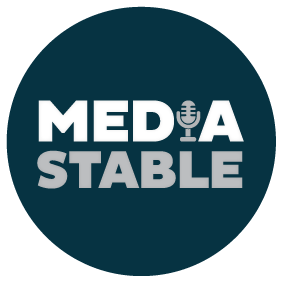Top tips for writing a TV Pitch
Selling a story to a TV newsroom is very different to selling one to print media. A TV audience usually has just one chance to understand a story, and often the news is being consumed while several other things are happening, like getting children ready for school or the chaos of dinner time. Stories need to be easy to understand, so vital to the viewer they mute the family and turn up the telly and incredible to look at. Pitching a yarn to a TV newsroom needs to follow a similar formula: easy to understand, relevant to their audience and beautiful to watch. If you don’t understand what the newsroom is after, your email will be sent straight to the trash folder. So as a former TV News Producer, here are my top tips that will give your story the best chance of making it to air:
- It’s all about the pictures. TV is a visual medium and the newsroom wants to know what they will be showing their audience, so lead your pitch with the best pictures you have on offer. They don’t have to be cinematic, but they do have to tell your story, whether it’s a mother with her children, a couple pouring over their finances, children interacting on the sporting field, a walk-through of a factory, or a specialist treating a patient. A media release does not make good tv so visualise how the story can be told and make the vision opportunity happen.
- Understand why the newsroom will care. Figure out how your story will relate to their audience and put this high in your pitch. Is it speaking to everyday consumers, young families, house hunters, retirees, school parents, budget holiday makers or another key demographic? TV audiences change throughout the day, so understanding who is watching and at what time will help you target your pitch to the right program.
- Know the headline. The newsroom will want to sell your story throughout the day, so how will they convince their audience to tune in during the bulletin or stick around to watch it? You know your story better than anyone so coming up with the headline can help the newsroom understand the point you’re trying to make quickly and easily. A sharp, catchy, clever headline can do wonders. Bonus points if your headline includes “first of its kind,” “gamechanger,” or “never seen before.” Don’t worry too much with the nitty gritty detail, like percentages, you can forward the dry stuff on after they’re hooked or include it at the end. If a busy journalist must wade through figures at the top of your email, you risk losing them before they get to the good stuff.
- Make sure you have talent available to speak on camera. A case study and an expert are essential. It sounds obvious but the case study must be relevant to the story. They need to speak on camera about their personal connection to the story, whether it’s a product, a service, an infliction, a program, whatever it is, and they also need to be filmed in action. The expert can then speak more in-depth and distil complex ideas into easy-to-understand grabs.
- Add a sweetener. Give the newsroom the opportunity to have the story as a TV exclusive, the stations are always battling it out to have the best exclusive content so use this to your advantage. If you have a relationship with a reporter who would be a good fit, email them directly rather than the Chief of Staff, they would love the opportunity to bring a great yarn to the table at the daily meeting.
- Know when to hold off. You can get the pitch formula exactly right but if other major events are unfolding, your feature still won’t rate a mention in the bulletin. Don’t bother making contact on election day or grand final day, and if you happen to send an email right before a major world event unfolds, follow up in a few days’ time, because it may have fallen through the cracks.
A good news story is subjective, so if it doesn’t land with one outlet, revisit your pitch and try again somewhere else. With a strong angle, great pictures and a chatty case study it’s bound to be picked up by a great reporter who will give it the attention it deserves.
Simone Kerr, Media Engagement Manager, Media Stable.
